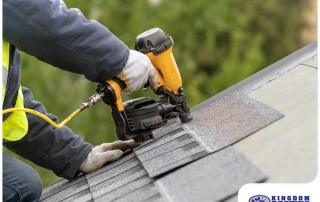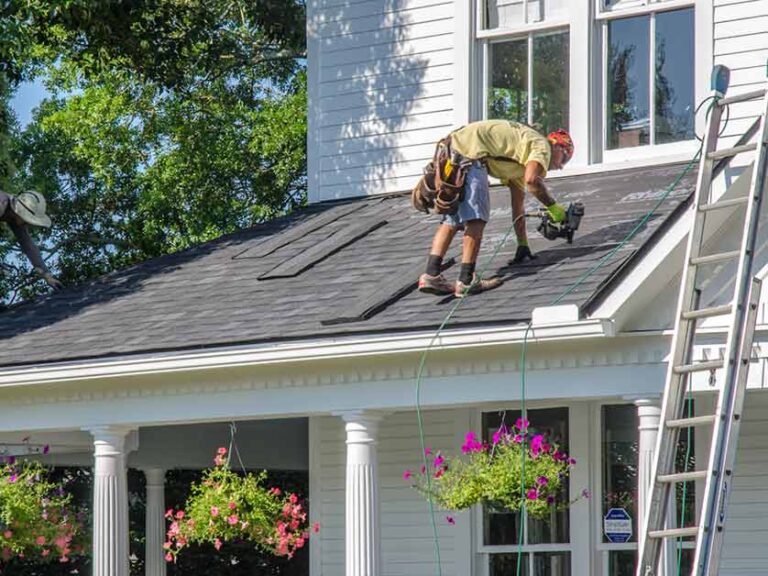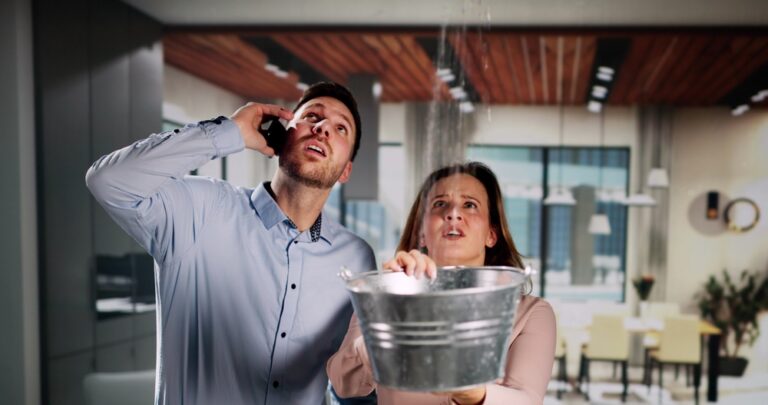Since your home’s roof is one of its most critical components, it’s crucial to keep it in good shape to protect your property and maintain its structural integrity. Certain parts of your roof are more vulnerable to damage and wear than others and need special care. Without proper attention, these areas can easily become worn, damaged, or less efficient.

To understand why these vulnerable roofing components deserve regular checkups and how you can keep them in peak condition, read on. As a roofing replacement expert, [company_name] explores the importance of maintaining the most vulnerable parts of your roofing system in this article.
What Are the Most Vulnerable Parts of Your Roof?
Shingles, gutters, flashing, drip edges, and vents are the most vulnerable parts of your roof. Each has a unique role in your home’s structural integrity and defense. Let’s take a closer look at each of them:
-
Shingles are one of the most vulnerable components of your roof. That’s because they are on the outermost layer of your roof and the first line of defense against a variety of elements, such as hail, wind, rain, and UV rays. Over time, they can become loose or torn, allowing rain and moisture to access your interior.
-
Gutters are integral to your roof because they help guide water away from your walls and foundation, keeping them safe from potential damage. If not regularly maintained, gutters, especially those tucked under the eaves, can become clogged, collecting debris, tree branches, and even soil. This can cause the water to back up and leak onto your roof, shattering its protective layer and leading to costly home repairs.
-
Flashing is an important component of your roof, as it keeps water from entering your home by creating a barrier between roof materials and walls. Flashing is used to seal roof penetrations such as chimneys, vents, and skylights. It is typically made of thin strips of impervious material, such as aluminum or copper. Over time, flashing can become loose, corroded, or cracked, allowing rain and moisture to access your interior. This part of your roof is a common source of leaks when it is damaged or improperly installed.
-
A drip edge is a metal flashing, typically aluminum, installed along the roof’s edge to help guide water away from the structure of your home and into the gutter system. It helps prevent water from entering your home and causing damage to walls and ceilings. A drip edge also helps keep wind-driven rain from entering the eaves and soffits and helps to protect them from water damage.
-
Vents play an essential role in the protection of your roof. They facilitate circulation, allowing heat and moisture to escape your attic while preventing moisture buildup in your home. Poor ventilation can lead to mold growth, problems with condensation, and possibly even damage to the structure of your home.
The Impact of Neglect on Vulnerable Roof Parts
Neglecting the vulnerable parts of your roof can greatly impact your home. When the shingles become loose or torn, it creates an entry point for water. Meanwhile, when the gutters become clogged or the flashing becomes loose, it can also allow water to access your interior, exposing your walls and foundation to damage.
Moreover, when vents are not properly ventilated, it can lead to moisture buildup, mold growth, and even damage to the structure of your home. As such, you should pay close attention to the vulnerable parts of your roof and conduct regular inspections.
How to Keep the Most Vulnerable Parts of Your Roof in Good Shape
There are several steps you can take to ensure these crucial components of your roof remain safe and sound.
-
Clear debris from gutters regularly. Gutters can easily become clogged with debris, such as leaves, tree branches, and soil. To prevent this, hire a professional to clean your gutters to ensure water can flow freely.
-
Install gutter guards to prevent clogging. Gutter guards are a great way to protect your home’s gutters from debris accumulation. These guards are installed on the gutters and help keep out leaves, tree branches, and other debris that could cause clogs. Installing gutter guards can reduce the maintenance required to keep your gutters clear and help ensure your roof can drain water effectively.
-
Check for damage or deterioration. Regular inspections are essential to detect any signs of damage or deterioration to shingles, flashing, drip edges, and vents. During routine inspections, checking for loose, cracked, or curled shingles, clogged gutters, worn-out flashing, damaged drip edges, and improper ventilation is vital.
-
Ensure proper ventilation. Ventilation is an essential component of keeping your roof in good shape. It facilitates circulation, allowing heat and moisture to escape your attic. Without proper ventilation, the buildup of moisture in your home can cause mold growth, condensation problems, and, ultimately, damage to the structure of your home. To ensure your roof is properly ventilated, it’s crucial to check vents during regular roof inspections and have them serviced periodically. Additionally, adding additional vents can also help to improve the circulation of air in and out of your attic and help keep your roof in optimal shape.
-
Call a professional for regular roof inspections. A regular professional roof inspection is like a doctor’s checkup; it’s all about early detection and prevention. These inspections involve assessing every component of your roofing system for potential damage or deterioration. Early detection can save time and money, ensuring small issues don’t balloon into costly residential roof repair projects.
Let [company_name] Help You With Your Roofing Issues
Caring for your roof’s vulnerable parts is more than just maintaining aesthetics. It’s about ensuring the safety and longevity of your home. From shingles to gutters and everything in between, these components demand professional care and maintenance.
As an expert in roof repair services, [company_name] is determined to assist you with your roofing project. If you need top-quality roofing solutions in Venice, FL, or the nearby areas, call us today at (941) 217-2411 or fill out our contact form to schedule an appointment.



